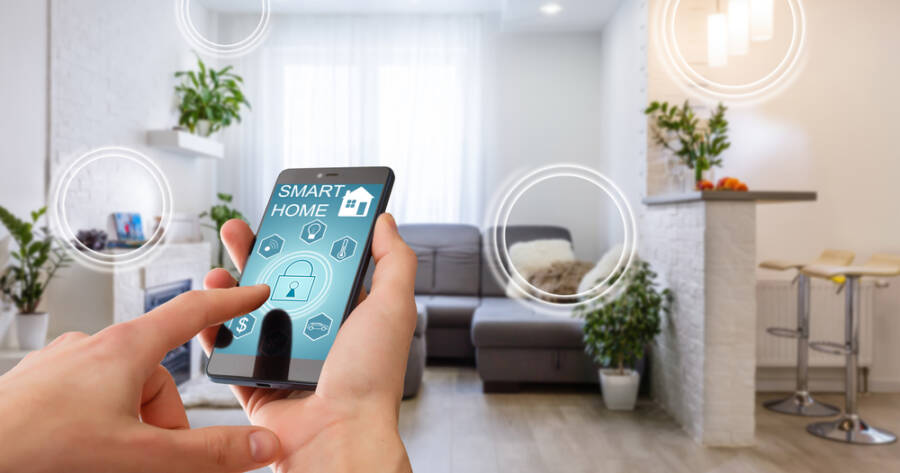Technology is making everyday life easier, and one of the best ways to take advantage of it is by turning your home into a smart home. Imagine lights that turn on as you walk in, thermostats that adjust automatically, and security cameras you can monitor from anywhere. Home automation isn’t just for tech enthusiasts—it’s for anyone looking to add convenience, security, and efficiency to their daily routine. Getting started is simpler than you might think, and you don’t need to be a tech expert to make it work.
Start with a Smart Hub or Voice Assistant
A great first step in home automation is choosing a central hub or voice assistant. Devices like Amazon Echo (Alexa), Google Nest Hub, or Apple HomePod allow you to control multiple smart devices using voice commands or an app. These hubs act as the “brain” of your smart home, ensuring that all your devices work together seamlessly.
If you’re unsure which one to get, consider the ecosystem you already use. If you have an iPhone, Apple’s HomeKit may be the easiest choice. Google fans might prefer Nest devices, while Alexa is compatible with a wide range of third-party smart products. Starting with a hub makes expanding your smart home easier as you add more devices over time.
Upgrade Your Lighting for Smart Control
One of the easiest and most effective upgrades is switching to smart lighting. With smart bulbs or smart switches, you can control the brightness, color, and even set schedules to match your lifestyle. Brands like Philips Hue, LIFX, and Wyze offer a variety of options that work with voice assistants and smartphone apps.
Smart lighting can be programmed to turn on gradually in the morning to simulate sunrise or dim automatically in the evening to create a cozy atmosphere. You can also set your lights to turn on when you enter a room or control them remotely while away from home.
Automate Your Climate Control
A smart thermostat can help maintain the perfect temperature in your home while saving on energy costs. Devices like the Google Nest Thermostat or Ecobee learn your schedule and adjust the temperature automatically, ensuring you’re comfortable when you’re home and conserving energy when you’re away.
Some models integrate with your smartphone’s location to detect when you’re leaving or arriving and adjust the temperature accordingly. Many also provide energy reports, helping you track usage and make cost-saving adjustments.
Improve Security with Smart Locks and Cameras
Home automation also enhances security. Smart locks let you lock or unlock doors remotely, grant temporary access to guests, and even receive alerts if someone tries to tamper with the lock. Popular options include August Smart Locks and Schlage Encode, which work with voice assistants and smartphone apps.
For additional security, smart cameras and video doorbells, such as Ring or Arlo, provide live video feeds and motion detection alerts. These allow you to monitor your home in real time, whether you’re inside or away. Some models even have two-way audio, so you can talk to visitors or delivery drivers without opening the door.
Automate Daily Tasks with Smart Plugs and Appliances
Smart plugs are an affordable way to make everyday devices smarter. Plugging lamps, coffee makers, or even fans into a smart plug allows you to control them remotely or set schedules for automatic operation.
Smart appliances like robotic vacuums, Wi-Fi-enabled coffee makers, and connected refrigerators add even more automation to your routine. A robot vacuum can clean your floors while you’re at work, and a smart coffee maker can have your morning brew ready when you wake up.
Enhance Entertainment with Smart Speakers and Streaming Devices
If you love music and movies, smart entertainment devices can take your experience to the next level. Smart speakers like the Sonos One or Echo Studio provide high-quality audio with voice control capabilities. Streaming devices like Chromecast, Apple TV, and Fire Stick allow you to automate TV settings, integrate with other smart home devices, and even control playback with voice commands.
Some TVs also have built-in automation features, allowing you to create routines like dimming the lights and starting a movie with a single command.
Bringing It All Together
As you begin automating your home, start small and expand over time. Choose devices that fit your lifestyle and work within the same ecosystem to ensure seamless integration. Many smart home products are designed to be user-friendly, so setting them up doesn’t require advanced technical skills. With the right combination of smart devices, you’ll enjoy greater convenience, energy efficiency, and peace of mind—making your home not only smarter but also more comfortable and secure.

